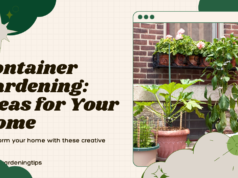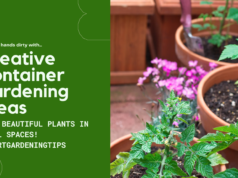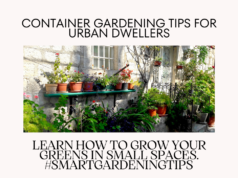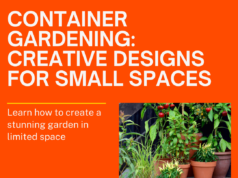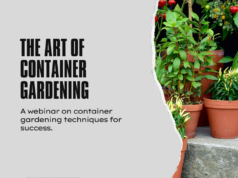How to Use Peat Moss in Container Gardening: Benefits and Techniques
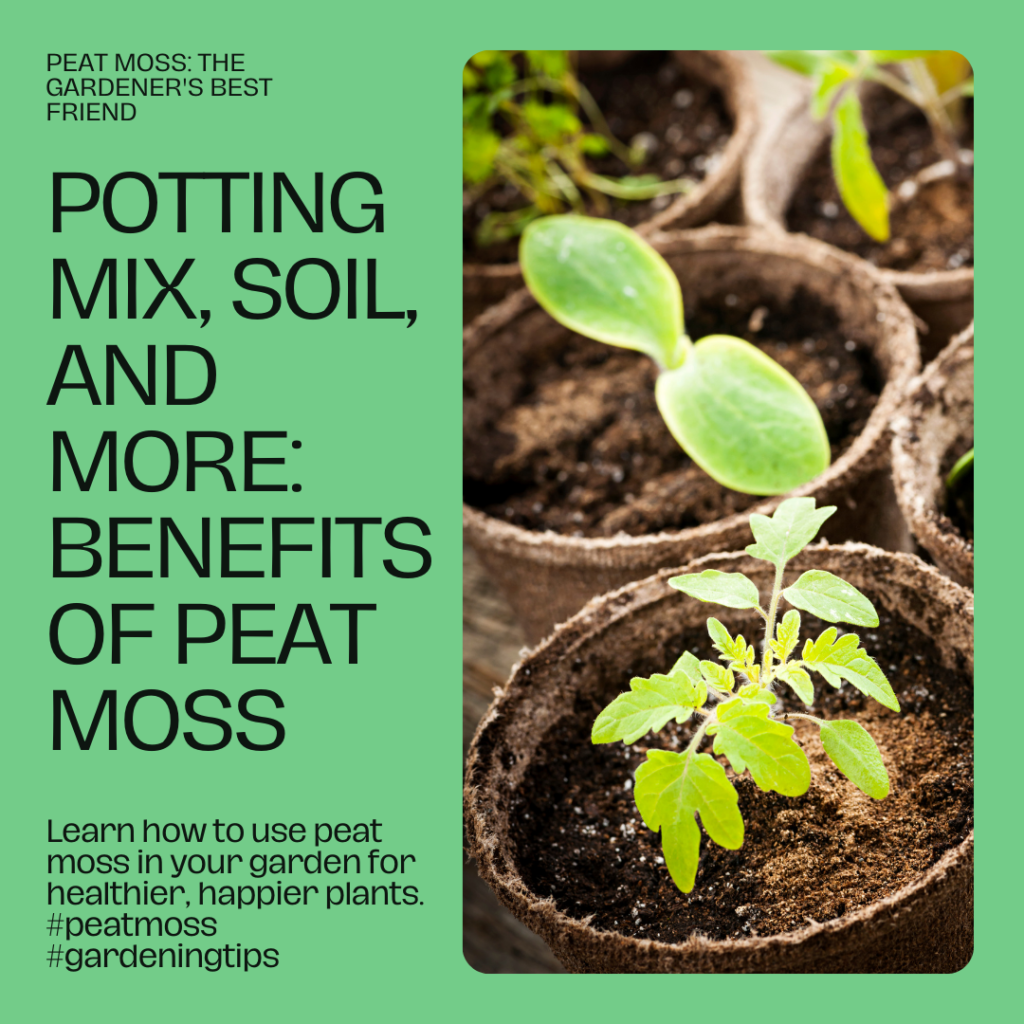
Boost your container gardening game with the bountiful benefits of peat moss! If you’re eager to maximize the health and productivity of your plants, incorporating this versatile ingredient is the way to go. In this article, we’ll explore the wonders of peat moss and show you how to use it effectively in your container gardening endeavors.
Discover its origin, unique properties, and the advantages it brings, such as improved moisture retention and enhanced nutrient absorption. We’ll guide you through techniques like choosing the right type and quality, incorporating it into potting mixes, and top-dressing containers for optimal moisture control.
Plus, we’ll address considerations like application, balancing with other components, and maintaining pH levels. Get ready to dive into the world of peat moss and elevate your container gardening skills!
Key Takeaways
– Peat moss improves moisture retention, drainage, and nutrient absorption in container gardening.
– Techniques for using peat moss include choosing the right type and quality, incorporating it into potting mixes, and top-dressing containers for moisture control.
– Proper application involves considering the correct quantity of peat moss, balancing it with other components in the potting mix, and addressing pH levels if necessary.
– Peat moss can be combined with other amendments such as organic matter, perlite or vermiculite, and compost or fertilizers for enhanced plant growth.
Understanding Peat Moss
To understand peat moss, you should know that it’s a type of organic material formed from partially decomposed plant matter. Peat moss is widely used in container gardening due to its numerous benefits and versatile techniques. Understanding peat moss is essential for successful container gardening.
Peat moss has unique characteristics and properties that make it an ideal addition to potting mixes. It helps improve moisture retention and drainage, enhances nutrient absorption, and promotes increased aeration and root development.
When using peat moss in container gardening, it’s important to choose the right type and quality, incorporate it properly into potting mixes, and top-dress containers for moisture control.
Benefits of Peat Moss in Container Gardening
To fully experience the benefits of peat moss in your container garden, you should take advantage of its ability to improve moisture retention, enhance nutrient absorption, and promote aeration and root development. Peat moss is an excellent addition to your potting mix, as it helps create a favorable environment for plant growth.
Here are some of the benefits of using peat moss in container gardening:
| Benefits of Peat Moss in Container Gardening |
|—|—|—|
|1. Improves moisture retention: | Peat moss has the ability to hold water, preventing excessive drying of the soil in containers.|
|2. Enhances nutrient absorption: | Peat moss acts as a sponge, absorbing and storing nutrients that are essential for plant growth.|
|3. Promotes aeration and root development: | Peat moss helps loosen compacted soil, allowing roots to grow and access oxygen more easily.|
Techniques for Using Peat Moss
To effectively utilize peat moss in container gardening, you should learn specific techniques for incorporating it into your potting mix. Peat moss is a valuable soil amendment that can greatly benefit your plants.
One technique is to choose the right type and quality of peat moss for your container gardening needs. Look for sphagnum peat moss, as it has excellent moisture retention capabilities.
Another technique is to mix peat moss with other organic matter, such as compost, to provide additional nutrients for your plants.
Additionally, you can top-dress your containers with peat moss to help control moisture levels.
Proper Application and Considerations
When applying peat moss in container gardening, it’s important to consider the proper application and various factors that may affect its effectiveness.
To ensure the best results, start by determining the correct quantity of peat moss to use in your potting mix. It’s recommended to add around 20-30% peat moss by volume.
However, it’s crucial to balance peat moss with other components like compost, perlite, or vermiculite to create a well-draining and nutrient-rich mix.
Additionally, consider the pH levels of your potting mix and correct acidity if necessary by adding lime or sulfur. Remember that peat moss tends to be acidic, so monitoring and adjusting pH levels is essential.
Combining Peat Moss With Other Amendments
By mixing peat moss with other organic matter, you can enhance the nutrient content of your potting mix while promoting healthy plant growth.
Peat moss is a valuable amendment in container gardening due to its ability to retain moisture and improve soil structure. However, to maximize its benefits, you should consider combining it with other amendments.
One option is to add compost, which provides additional nutrients and improves soil fertility. Another option is to incorporate perlite or vermiculite, which enhances aeration and drainage. These amendments help prevent soil compaction and root rot, ensuring optimal growing conditions for your plants.
Additionally, you can consider using slow-release fertilizers to provide a steady supply of nutrients over time. Experiment with different combinations to find the ideal mix for your container gardening needs.
Watering and Maintenance Considerations
Continue maximizing the benefits of peat moss in container gardening by carefully considering watering and maintenance practices. Proper watering and maintenance are essential for the health and success of your container plants. Here are a few key considerations to keep in mind:
– **Consistent watering:** Peat moss has excellent water retention capabilities, so it’s important to monitor soil moisture levels and adjust your watering accordingly. Avoid overwatering or allowing the soil to dry out completely.
– **Preventing waterlogging and dryness:** Ensure proper drainage by using containers with drainage holes and adding a layer of gravel at the bottom. This will prevent waterlogging and promote healthy root growth. Regularly check the soil moisture to prevent it from becoming too wet or too dry.
– **Addressing maintenance issues:** Keep an eye out for compacted soil, which can hinder root growth. If you notice any signs of compaction, gently loosen the soil with a fork or trowel. Additionally, be mindful of fungal growth, especially in humid conditions. Proper air circulation and avoiding overwatering can help prevent fungal diseases.
– **Regular inspections:** Regularly inspect your container plants for any signs of pests or diseases. Promptly address any issues to prevent them from spreading and causing damage.
Environmental and Sustainability Considerations
To maximize the benefits of peat moss in container gardening, carefully consider the environmental and sustainability implications of its usage. While peat moss offers numerous benefits for container gardening, it is important to be aware of the potential environmental concerns associated with its extraction. Peat moss is harvested from peatlands, which are unique and fragile ecosystems that provide important habitat for various plant and animal species. The extraction of peat moss can disrupt these ecosystems and contribute to carbon emissions, as peatlands store significant amounts of carbon. As an alternative, you can consider using sustainable alternatives to peat moss, such as coconut coir or compost. By making conscious choices regarding the sourcing and usage of peat moss, you can help minimize its environmental impact and promote more sustainable container gardening practices.
| Environmental Concerns | Sustainable Alternatives |
|————————|————————|
| Disruption of peatland ecosystems | Coconut coir |
| Carbon emissions | Compost |
Case Studies and Success Stories
Now let’s explore real-life examples of how incorporating peat moss in container gardening has led to successful outcomes.
– A container garden filled with peat moss provided the perfect moisture retention and drainage for vibrant and healthy tomato plants.
– The addition of peat moss to a potting mix resulted in improved nutrient absorption, allowing a variety of herbs to thrive and produce bountiful harvests.
– By using peat moss as a top dressing, container plants were able to maintain optimal moisture levels, reducing the need for frequent watering and ensuring long-lasting beauty.
– A case study showcasing the use of peat moss in container gardening demonstrated how it promoted excellent aeration and root development in a variety of flowers, resulting in robust and blooming displays.
These success stories highlight the numerous benefits and techniques associated with incorporating peat moss in container gardening, showcasing its ability to create thriving and beautiful plantings.
Precautions and Limitations
Be aware of potential drawbacks when using peat moss in container gardening. While peat moss offers numerous benefits for your plants, it is essential to understand its limitations and take precautions to ensure successful gardening. One limitation is that peat moss is not a renewable resource and its extraction can have negative environmental impacts. Additionally, peat moss has a high acidic pH, which may not be suitable for all plants.
It is crucial to consider the specific requirements of your plants and adjust the pH levels accordingly. Moreover, peat moss has a tendency to compact over time, affecting soil aeration and drainage. Regularly monitoring and addressing any compacted soil issues is necessary. Lastly, some individuals may have allergies or sensitivities to peat moss, so it is important to be cautious when handling it.
Learn about the fundermentals and blueprints of container gardening.
| Precautions and Limitations |
|—————————–|
| Not a renewable resource |
| High acidic pH |
| Soil compaction |
| Allergies/sensitivities |
FAQ
Q: What is peat moss and how is it used in container gardening?
A: Peat moss is a type of sphagnum moss that is commonly used as a soil amendment in container gardening. It helps to improve soil structure, retain moisture, and provide a slightly acidic pH, which is beneficial for certain plants.
Q: What are the benefits of using peat moss in container gardening?
A: Peat moss offers several benefits, including improved soil aeration, moisture retention, and its ability to promote healthy root growth. It also has natural anti-fungal properties and helps to maintain a slightly acidic pH for acid-loving plants.
Q: Can peat moss be used as a potting medium on its own?
A: While peat moss can be used as a standalone potting medium for some plants, it is commonly mixed with other ingredients such as perlite, vermiculite, and compost to create a well-balanced and nutrient-rich growing medium for container gardening.
Q: Are there any alternatives to peat moss for container gardening?
A: Yes, there are several alternatives to peat moss, including coconut coir, composted pine bark, and rice hulls. These alternatives offer similar benefits to peat moss and can be used as a sustainable and environmentally-friendly option.
Q: How is peat moss different from garden soil?
A: Peat moss is a soil amendment that improves soil structure and moisture retention, while garden soil refers to the natural soil found in outdoor gardens. Peat moss is often mixed with garden soil to enhance its properties for container gardening.
Q: Can peat moss be used for starting seeds in containers?
A: Yes, peat moss is commonly used for seed starting in containers due to its ability to retain moisture and create a suitable environment for germination. It provides a soft and airy texture that promotes healthy root development.
Q: How much peat moss should be used in a potting mix?
A: It is recommended to use peat moss in moderation, typically at a ratio of 1:1 with other ingredients such as perlite or compost. Using too much peat moss can lead to excessive water retention and compaction in the growing medium.
Q: Are there any plants that particularly benefit from peat moss in container gardening?
A: Yes, plants such as blueberries, azaleas, rhododendrons, and other acid-loving plants thrive in container gardening when peat moss is included in the potting mix. Peat moss provides the acidic pH that these plants require for healthy growth.
Q: Where does peat moss come from and how is it harvested?
A: Peat moss is derived from peat bogs, which are large areas of wetland characterized by the accumulation of partially decayed plant material. Harvesting peat moss involves carefully extracting the moss from the bogs while ensuring the preservation of the ecosystem.
Q: Is peat moss a sustainable option for container gardening?
A: Peat moss is a non-renewable resource that forms over thousands of years in peat bogs. As an alternative, gardeners can explore sustainable options such as coconut coir, composted pine bark, or other organic materials to minimize the impact on peat bogs and the environment.
Conclusion and Final Thoughts
In conclusion, it’s important to regularly assess the success of your container gardening efforts and make adjustments as needed.
Container gardening with peat moss can offer numerous benefits and techniques that contribute to the overall success of your plants.
As you wrap up your container gardening journey, keep the following in mind:
– Embrace the benefits: Peat moss improves moisture retention, enhances nutrient absorption, and increases aeration and root development in your containers.
– Master the techniques: Choose the right type and quality of peat moss, incorporate it into your potting mixes, and top-dress containers for better moisture control.
– Adapt and evolve: Continuously evaluate and adjust your watering and maintenance practices to ensure optimal plant growth.
– Consider sustainability: Be mindful of the environmental impact of peat moss extraction and explore alternative options for more sustainable container gardening.
By implementing these techniques and considering the benefits and sustainability aspects, you can create thriving container gardens using peat moss.
Happy gardening!


